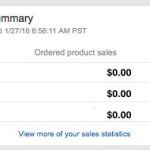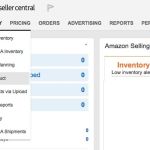Greg stared at his Amazon listing in confusion. He read the review a second and third time but couldn’t quite comprehend what was being said. Tim had written: “This product looked nothing like the pictures on the Amazon page. It was a different color and the length was 3 inches shorter. Very poor quality.”
How could that be?! Greg had been selling the same product on Amazon for 9 months. Sales had grown steadily over the past 3 months, and customers never had an issue with the product’s quality. And how could it be another color? He only offered the product in one color.
After nearly two hours of investigation, Greg uncovered the truth. Like thousands of others of Amazon sellers, he had become a victim of hijackers. Images had been added to his listing, and several of the bulleted features had been changed.
Hijackers are individuals who find strong selling Amazon product listings and take them over to sell their own products. Suddenly all of that traffic you’ve been working on for the last several months is being used to funnel customers directly to the hijackers products.
So what could Greg do? How does he stop someone he had never met and couldn’t see? How many more customers were being shipped fake products that would result in negative customer reviews for his own brand?
If you were Greg, would you know what to do? If not, then read along. Though Amazon works hard to prevent hackers from gaining access to listings, hijackers wreak havoc on Amazon every single day. It’s imperative, then, that every Amazon seller be aware of the steps to prevent and confront hijacking. Here’s the best information we can give you:
PREVENTING HIJACKERS FROM GETTING TO YOUR LISTING
Unfortunately, like regular home burglars, online hijackers are often sneaky and have honed their ability to get into someone else’s property. But just as installing a security system in your home will make you less likely a victim, so heeding the following advice can make your listing more difficult to hijack.
1. Differentiate your product or packaging before you order
Now it may be too late for you to do this, but if you’re looking at beginning to sale on Amazon or offering another product through your existing listing, think about how your product can be different from the turn-key item everyone else is selling.
If you’re ordering a product that is readily accessible to anyone else looking to sell that item, hijackers find it easy to mimic that product with a cheaper variation. So think about a way to change your item by perhaps offering an accessory that goes along with it or bundling the item with other items.
If you can’t make your product different, consider making your packaging different. Instead of choosing the standard polywrap or the polybag, make your packaging distinct to your branding which will make it more difficult for hijackers to mimic. This will also make it easier to help customers distinguish between your actual product and other knock-offs.
James Thompson, a former Amazon employee, also recommends utilizing your UPC code to prevent hijacking. He suggests that sellers have the UPC actually printed on the product directly if possible. If that’s not possible, try having the UPC printed directly onto the packaging instead of using a sticker.
2. Have your brand trademarked
Simply inventing a new brand name does not mean that Amazon will recognize your brand as proprietary. Having your brand name registered as a legal trademark is extremely helpful to protect your products and your listing.
So be sure to register your trademarked brand with Amazon. You can find simple instructions to do so in the following video from Amazon. Or you can go directly to the Amazon brand registry page here.
Registering your brand with Amazon doesn’t mean that other sellers can’t sell your product. However, it does does accomplish an extremely important task - your product listing information is now locked exclusively to your brand, making it much more difficult to hijack your listing and to change its content. Note: The only part of your listing information that is not protected after registering your brand are the product images.
3. Take screenshots of your Amazon listing page
Having documented pictures of your Amazon listing can help prove that you are the original creator of the listing, and it will certainly be a great help to show Amazon how the page should actually look once you’ve cleared up the hijacking situation.
4. Create a website with your brand name in the url
You may not think you need a website yet, but having a website domain attached to your brand will help Amazon see that you are indeed the brand behind the product. James Thompson, the previously mentioned former Amazon employee, also recommends creating a page on your website where products are listed and the SKUs are visible for each. You can also include the exact same copywriting that you’ve written for your Amazon page. This could be extra evidence that the product is indeed your product. Even if you can’t sell through the website, Amazon will be aided in resolving the situation when they see the product SKUs on your own branded site.
5. Amazon Frustration-Free Packaging
Amazon offers a special packaging certification for sellers called Frustration-Free Packaging. Amazon’s primary purpose of the certification is to reduce the use of excess materials and utilize recyclable materials in product packaging. Once a seller goes through the process, Amazon will label the packaging with their own official certification stamp. Though Amazon has their own purposes behind Frustration-Free Packaging, it can serve as a helpful distinction in your own packaging that is extremely difficult for hijackers to imitate. You can find out more about the process at this link: http://www.amazon.com/b/?&node=5521637011.
CONTACTING AMAZON AFTER A HIJACKING EXPERIENCE
If you’ve passed the point of safeguarding your site and you’ve found your site has been hijacked, you need to contact Amazon immediately.
Now some Amazon sellers have found that phone calls are difficult at times due to language barriers. If this has been your case in the past, send an email. When writing your email, be sure to take your time and explain what has happened in the clearest way possible. Give appropriate dates that might be helpful (when you began selling, when you first noticed something was wrong, etc.), and be sure to attach any specific evidence you can provide. Screenshots, customer photos, email correspondence with the apparent hijackers - anything that can help the customer representative do their job efficiently and in a timely manner.
If you’d like, don’t hesitate to place a call directly after sending the email. Both can be helpful to move the situation along to a successful conclusion. (Note: Please know that yelling or demeaning the customer rep WILL NOT grant you a more speedy process. It may actually have the opposite effect.)
CONTACTING THE HIJACKERS
If you’ve uncovered the culprits of your hijack and you’ve found their contact information, don’t hesitate to send them an email or a letter. This correspondence should appear to be formal in nature and void of any exaggerated threats. Be sure to keep a copy for your records and to record the date you sent the correspondence.
A legal “cease and desist” form letter can be found on a number of internet sites. If you’d like to sound a bit more formal and official, revise these templates to fit your own situation and send it by mail if possible.
This kind of correspondence has often put an immediate stop to the hijackers activity, but even if it doesn’t, it’s good to have a copy to show Amazon support if needed.
CONTACTING A CUSTOMER WHO PURCHASED A COUNTERFEIT PRODUCT
Many times, Amazon sellers first find out about their hijacking situation through a poor customer review. Unknowingly, the customer assumes they have been tricked into buying a poor product. It’s important that you not simply let that customer walk away without rectifying the situation.
Respond to the customer’s review as soon as possible, and let them know what has happened. Explain this in simple terms since buyers are not usually thinking about the ins-and-outs of Amazon selling. Also, ask them to send their contact info to you through your company email, and offer to send a genuine product at no extra cost.
Once you’ve sent the customer a replacement, contact them one more time after it’s been delivered to check on their experience with the new product. It’s at that point that you should also ask that their review be amended to reflect the truth behind the circumstances. You can’t force a customer to change the review, but most will understand your predicament.
Conclusion
Hijackers are headaches that can cause serious damage to your Amazon business. It’s never too early to start protecting yourself and creating a current strategy to deal with this future problem. No one says that getting rid of an Amazon hijacker is easy, but using all of the available resources listed in this article will make it much less frustrating.
Hijackers are a pain, but using this guide you can triump over them in the long term. Once you're done dealing with hijackers give Salesbacker a try. You can get more product reviews which can help you get more sales.







